If you want to know more information (such as product/process price, etc.), please contact us 24-hour telephone
Global fluorite resources are mainly distributed in countries such as China, Mexico, South Africa, and Mongolia. Today, fluorite mining faces significant challenges. On one hand, high-grade fluorite resources with CaF₂ content above 97% are gradually being depleted. On the other hand, increasingly stringent environmental protection policies are accelerating the development of green mines. Therefore, selecting appropriate mining and beneficiation methods is key to achieving a high recovery rate while complying with environmental regulations.
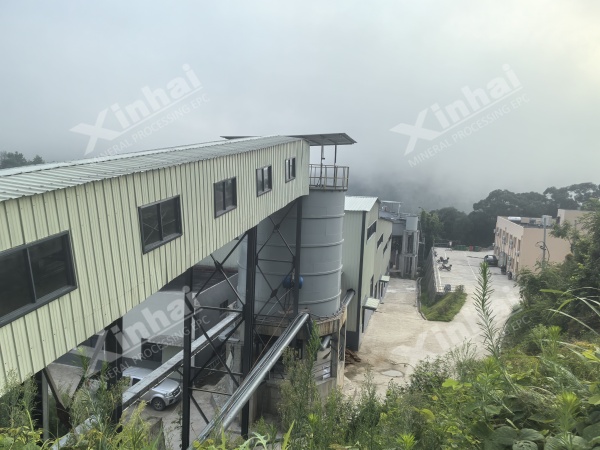
(1) Underground Mining
Fluorite is primarily mined through underground methods. This approach is suitable for deposits with deep ore bodies, sensitive surface environments, or complex geometries (such as veins and lenses).
(2) Technical Solutions Based on Deposit Types
Hydrothermal filling deposits: Ore bodies are typically lens-shaped or vein-like, and the surrounding rocks are usually volcanic rocks or gneiss. Layered mining is required, often using blasting techniques such as the shallow-hole retained ore method.
Sedimentary-transformation deposits: Ore bodies occur in layered carbonate rocks. Roof support and groundwater control are critical during mining.
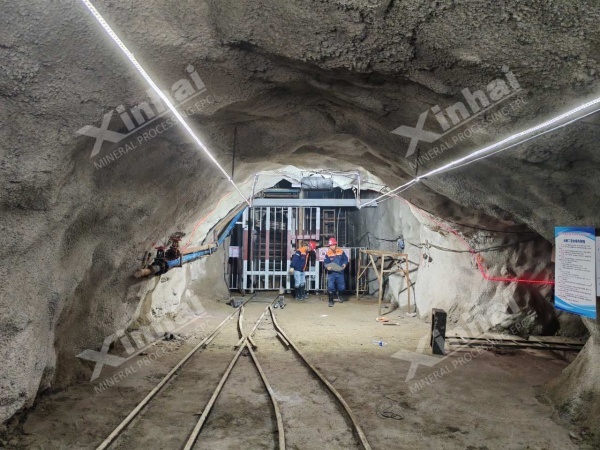
(1) Exploration and Evaluation
Geological survey: Involves drilling to analyze stratigraphy, ore body distribution, and metamorphism, followed by construction of a three-dimensional ore body model.
Resource evaluation: Involves calculating recoverable reserves and ore grades, and assessing the economic feasibility.
(2) Planning and Management
Mining sequence optimization: Prioritize high-grade ore sections and coordinate with low-grade areas to minimize resource loss.
Environmental protection measures:
Goaf treatment: Use underground backfilling techniques (e.g., crushed stone + cement) to prevent surface subsidence.
Wastewater and waste management: Install treatment systems, such as neutralization and sedimentation tanks, to handle fluoride-containing wastewater.
(3) Equipment Selection
Crushing and screening: Jaw crushers are used for primary crushing, reducing the ore to 100–300 mm; cone crushers are employed for secondary crushing to achieve 8–20 mm. If the ore contains a high clay content, a trommel screen can be added for washing.
Transportation and impurity removal: Belt conveyors, combined with electronic magnetic separators, are used to remove magnetic impurities.
Special equipment: Underwater mining utilizes deep-sea hose transportation and subsea mineral loading technologies.
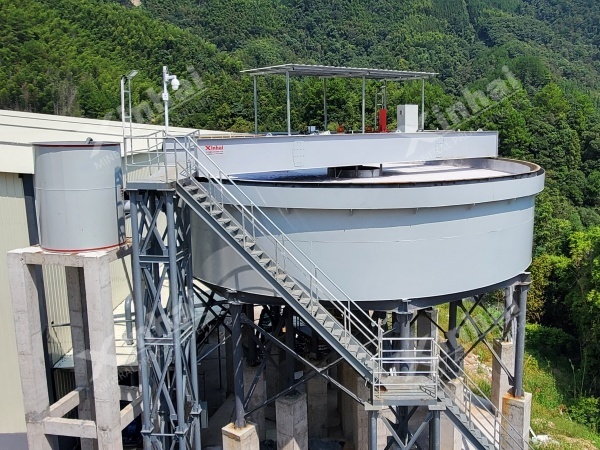
Hand Sorting: Used for coarse-grained ores (>20 mm) with clear boundaries between fluorite and gangue. Due to its low efficiency, hand sorting is typically applied only as a pre-concentration step before subsequent processing.
Gravity Separation: Commonly used as a pre-flotation treatment to remove gangue minerals such as quartz (typically accounting for 10%–40%). Equipment like jigs and shaking tables are used. Applicable particle sizes: 30 (20)–0.5 mm for shaking tables, and 0.1–0.37 mm for spiral chutes.
Flotation: Suitable for processing finely embedded or low-grade ores (CaF₂ < 40%). Fluorite is separated from gangue minerals by adjusting reagent schemes. Common flotation equipment includes mechanical agitation flotation machines (e.g., BF, SF types) and air-inflation flotation machines (e.g., XCF, KYF types).
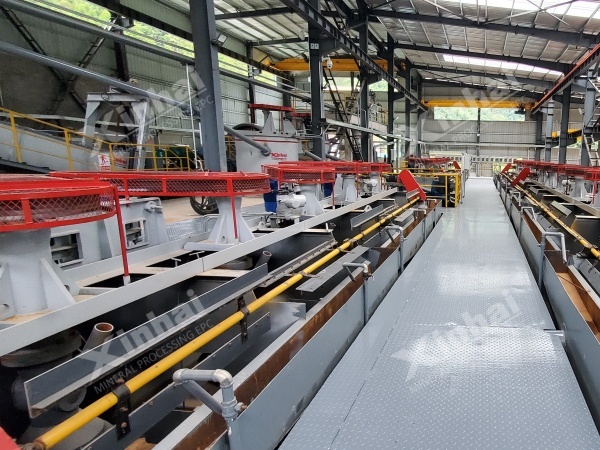
Ore → Crushing and screening → Grinding and classification → Flotation (rough grinding → rough flotation → regrinding of rough concentrate → multiple cleaning) → Concentration and dewatering → Final concentrate
Low-grade ores (CaF₂ < 30%): Use photoelectric sorting to remove tailings before flotation, improving the feed grade.
Iron impurities: Magnetic separation can be added after flotation to remove residual iron-bearing minerals.
Fluorite ores can be classified into four types: quartz-type, calcite-type, barite-type, and sulfide-type. The flotation reagent systems for each type vary and are summarized in the table below:
| Ore type | Adjuster | Inhibitor | Collector |
|---|---|---|---|
| Quartz type | Sodium carbonate | Water glass + Al³⁺/Fe³⁺ | Oleic acid |
| Calcite type | Weakly acidic pH | Water glass/sodium hexametaphosphate | Oleic acid + aluminum salt |
| Baryte type | Sodium carbonate | Dextrin/tannin extract | Alkyl sulfate |
| Sulfide ore type | - | Cyanide (small amount) | Xanthate + fatty acid |
Concentrate dewatering: Use a thickener (stage 1), followed by a filter press or vacuum filter to reduce moisture content to 9%–12%.
Tailings management: Employ dry tailings discharge (cyclone + dewatering screen). The dried fluorite tailings can be recycled as secondary resources, such as for use in building materials.
This is a 300 t/d fluorite beneficiation project undertaken by Xinhai Mining, located in Jiangxi Province, China. Xinhai provided a full range of mining industry chain services (EPCM+O) for this project. The ore is a high-silica fluorite type. Based on the results of the beneficiation test, a customized beneficiation solution was developed. The final concentrate grade exceeds 98% CaF₂, meeting the chemical-grade standard.
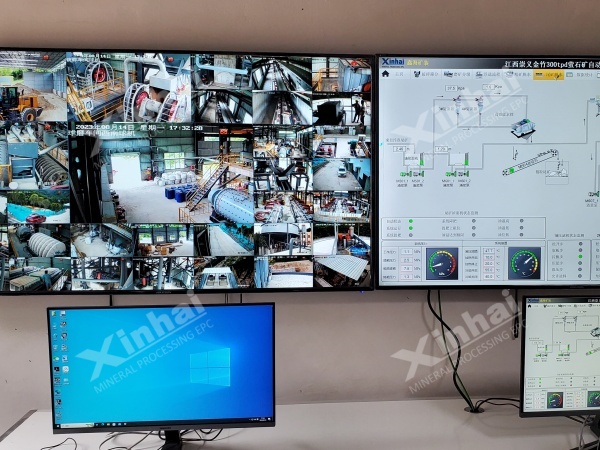
The ore features a close symbiotic relationship between fluorite and quartz. To reduce the silica content in the concentrate, the Xinhai technical team increased the grinding fineness. In order to minimize the negative effects of primary and secondary slime on separation efficiency, only the coarse concentrate is subjected to regrinding.
Additionally, a beneficiation stage was introduced to pre-remove fine-grained fluorite–quartz intergrowths, reduce the impact of slime on flotation, and further improve the concentrate quality.
The raw ore undergoes a two-stage, one-closed-circuit crushing and screening process. After primary grinding and secondary classification, the material reaches a fineness of 71% passing 200 mesh. Following one stage of roughing and one stage of scavenging, a coarse concentrate is obtained. After regrinding, the coarse concentrate reaches a fineness of 90% passing 325 mesh. Finally, after seven stages of cleaning and one stage of fine scavenging, a high-quality fluorite concentrate is produced. The concentrate is then thickened, filtered, and bagged to yield the final product.
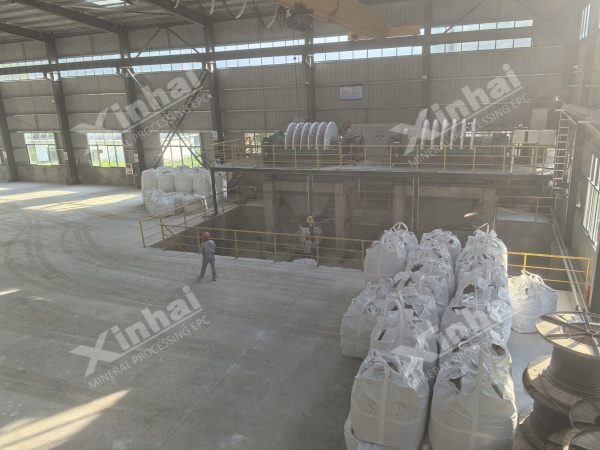
The key equipment used in this project includes: jaw crusher, ball mill, high-efficiency agitation tank, flotation machine, and thickener.
The project was officially commissioned in 2023. Throughout the design and construction stages, Xinhai Mining adhered to the concept of green and environmentally friendly development. Through scientific process design and advanced technical equipment, Xinhai helped the client successfully build a high-standard, eco-friendly fluorite processing plant.
Conclusion
Xinhai Mining provides one-stop services for fluorite mining and mineral processing (EPCM+O). Since its establishment in 1997, Xinhai has undertaken over 1,000 mineral processing projects both domestically and internationally, accumulating extensive industry experience. Currently, the company boasts more than 80 professional design engineers, as well as experienced pre-sales and after-sales teams, installation teams, and plant operation and management teams, ensuring full support for your project.
If you have any requirements for fluorite mining or beneficiation, please feel free to contact us.